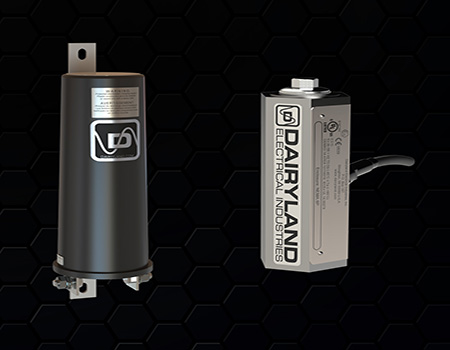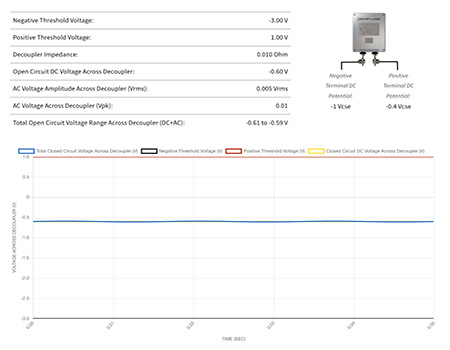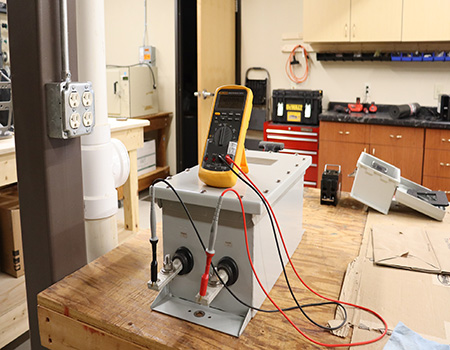The Top 3 Questions About Decouplers
Published by Kristian Ilasko,
Digital Content Coordinator
World Pipelines,
Dairyland decouplers keep workers and valuable assets safe from AC faults, lightning, and induced AC voltage, all while optimizing cathodic protection systems. We hold ourselves to a very high Always Rugged standard to ensure Dairyland products meet all critical performance requirements, provide fail-safe operation, and address hazardous location needs to guarantee longevity and safety.
What follows is an abbreviated version of an article in Dairyland’s Knowledge Base entitled, “Top-10 Questions About Decouplers.” For additional resources pertaining to each question, visit https://www.dairyland.com/knowledge-base/top-10-questions-about-decouplers/

Question 1: What is the difference between a Decoupler and an Over-Voltage Protector?
Dairyland decouplers (PCR, PCRH, PCRX, and SSD) are commonly used to isolate cathodically protected structures from other equipment grounding systems, enhancing the cathodic protection system’s performance. They also perform a function of safely grounding induced AC, fault current and lightning. Over-Voltage Protectors (OVP and OVP2) provide the same DC isolation and protection from fault current and lightning but are not designed to address induced AC current.
Therefore, the first question to ask when selecting a Dairyland product family is whether there is (now or could be in the future) any induced AC voltage present. Induced AC commonly occurs on structures near overhead powerlines. If the answer is yes, or if you are unsure, you should select a decoupler to address any present or future issues with induced AC.

Question 2: What is a “voltage threshold”? And how do I know that my decoupler has the correct voltage threshold for my application?
A decoupler’s voltage threshold is the voltage range supported between its terminals before direct current conduction. This is different from the industry measurement of “structure to soil” voltage, which is measured to a reference cell. The key value to measure is the difference between the two points a decoupler would be connected (pipe and ground) and compare that value to the negative threshold value.
For example, if a pipe-to-soil reading of -2V were obtained, and the reading from a grounding system to the same reference cell was -0.3V, then the decoupler connected between this pipe and grounding system would be exposed to -1.7V, which is the difference between the two readings. This assumes that the standard practice was used with decoupler negative terminal connected to the more negative structure (the pipeline) and positive to the grounding system. If the decoupler had a -3/+1V threshold, we compare the -1.7V reading to -3V value and find it acceptably below that threshold. Note that a -2/+2V threshold would have worked fine in this example as well. If the measured value were above the threshold, then the decoupler would be in full conduction and not block CP current. Standard Dairyland decoupler thresholds cover most pipeline situations.
A specific case that should be examined is where the proximity to a rectifier results in elevated pipeline voltage that could approach the decoupler threshold and in that case one might consider the 3, 4, or 6 volt negative threshold to address this.
Be sure to check out Dairyland's new Voltage Threshold Simulator. By experimenting with various devices, voltage threshold ratings, and system parameters, you can use the simulator to ensure your selection of device and voltage threshold rating do not cause the device to go into conduction during normal operating conditions. Visit https://www.dairyland.com/voltage-threshold-simulator/ to use the simulator now!

Question 3:How do I test a Dairyland decoupler to know if it is working?
A simple, indirect way to test a Dairyland decoupler is through a standard pipe-to-soil reading. If your test shows acceptable CP levels, then the device is functioning properly. Decouplers are designed to block DC current, therefore acceptable cathodic protection readings reflect an operational Dairyland device.
For more detailed testing, please refer to our website’s tech articles: “Indirect Testing” & “Direct Testing.”
Dairyland Electrical Industries
Dairyland Electrical Industries was the first company to introduce solid-state decoupling products to the corrosion industry, replacing the unreliable and dangerous polarization cells that exposed workers to shock hazards and highly caustic chemicals. In the decades that have followed, their solution-focused team has continued to deliver innovative decoupling products, solving critical problems across numerous applications and industries.
For more than forty years, Dairyland has pioneered new technologies and set new standards in the market. Backed by third-party certifications to standards around the world, Dairyland manufactures products to the highest quality, ensuring unmatched performance. They are dedicated to understanding customers’ needs and providing reliable information on products, applications, and services. Learn more at www.dairyland.com.
Read the article online at: https://www.worldpipelines.com/special-reports/22072025/the-top-3-questions-about-decouplers/
You might also like
The World Pipelines Podcast - Protecting high value assets with AMPP
Juan Caballero, Chair of the AMPP Board of Directors, talks about AMPP's global efforts to prevent corrosion and to protect assets, offering insight into how the association listens to its members and serves the pipeline industry.
Tune in to the World Pipelines Podcast on your favourite podcast app today.

